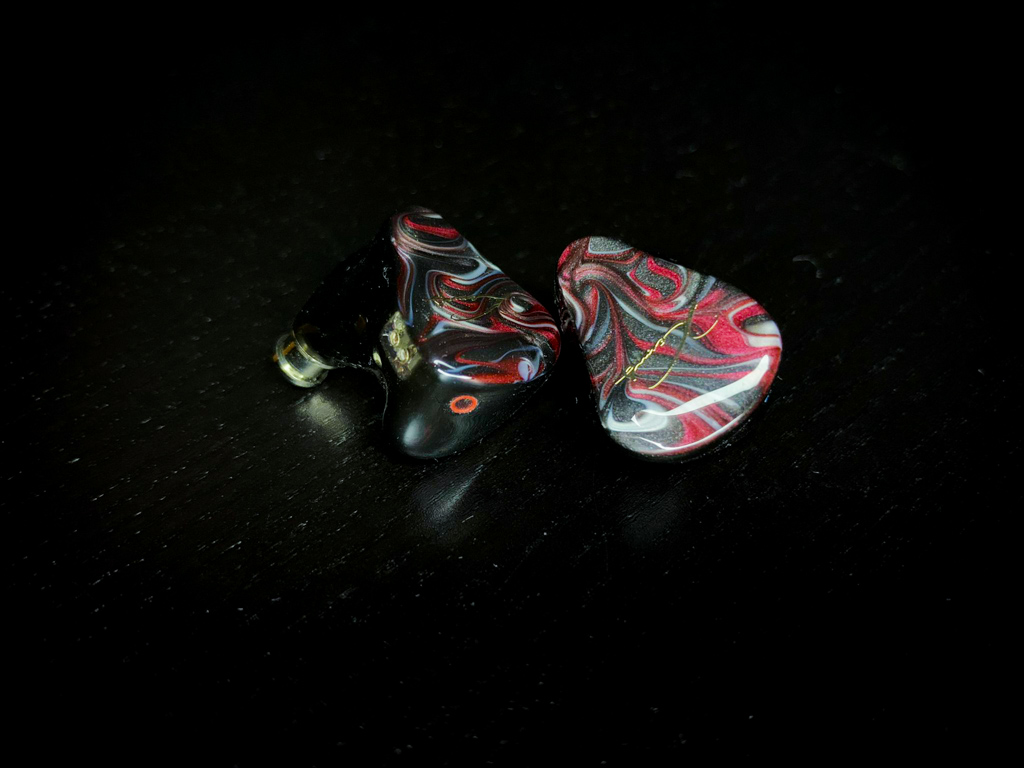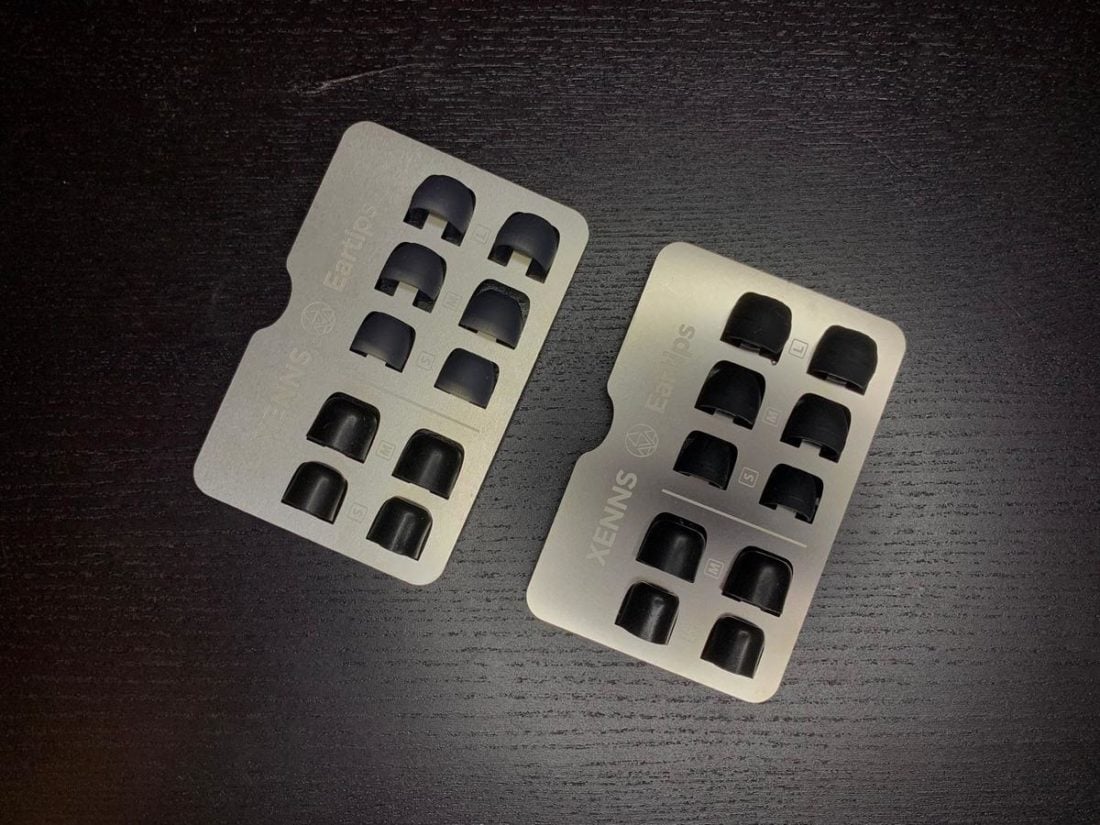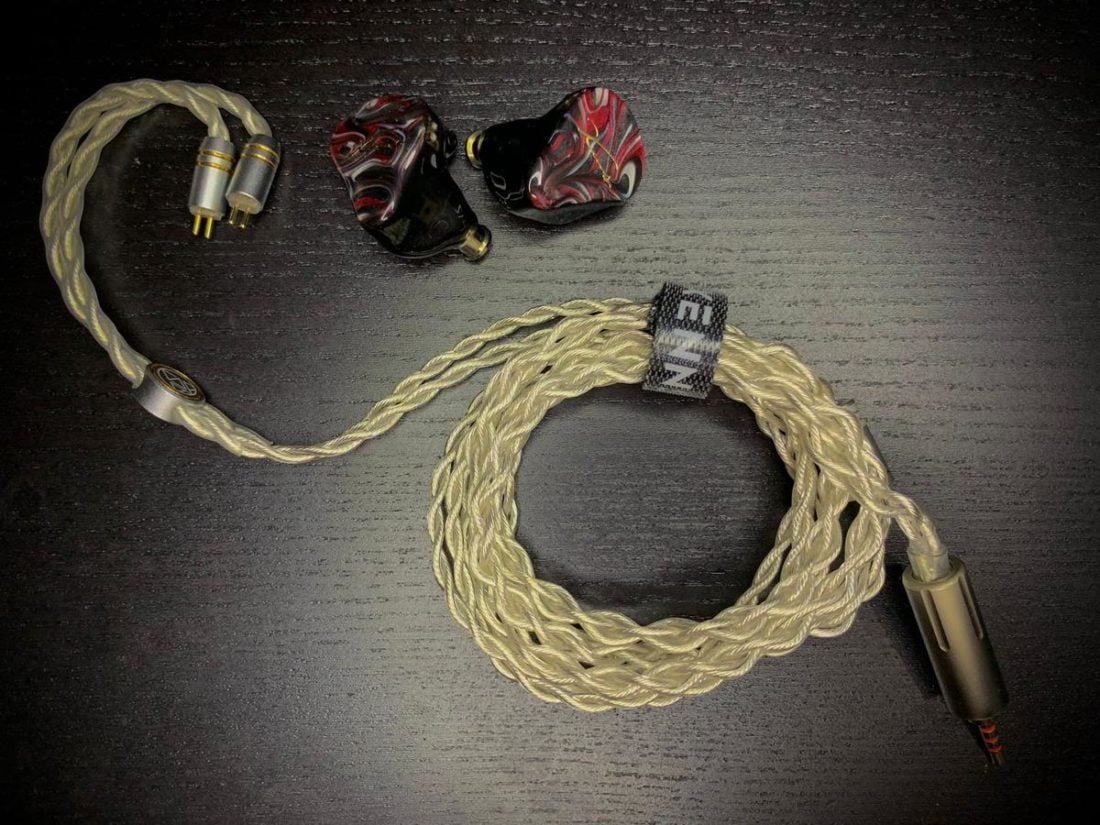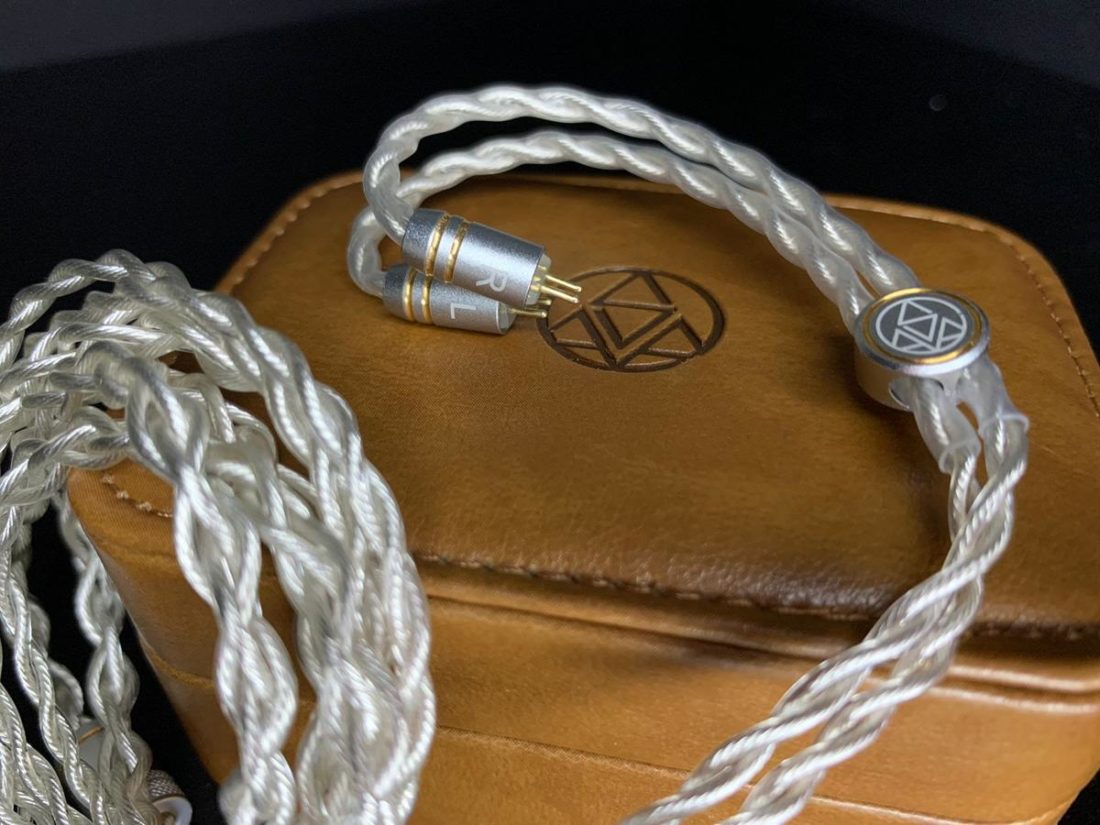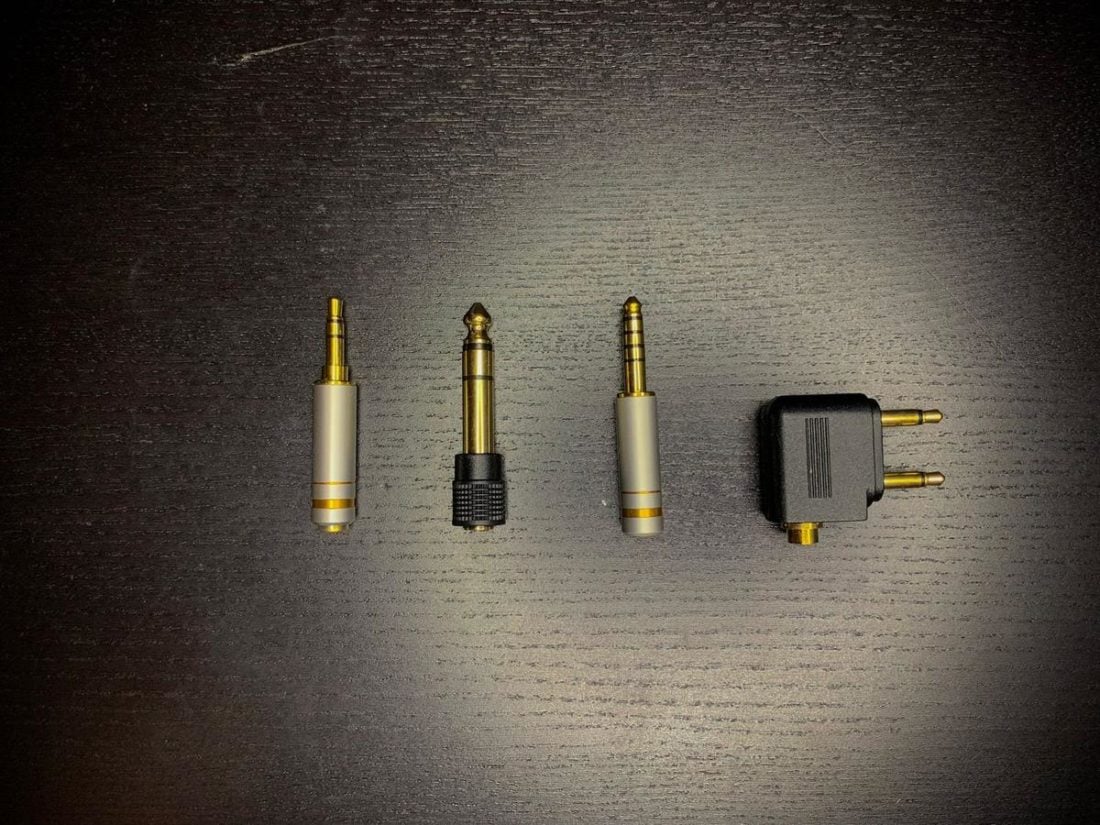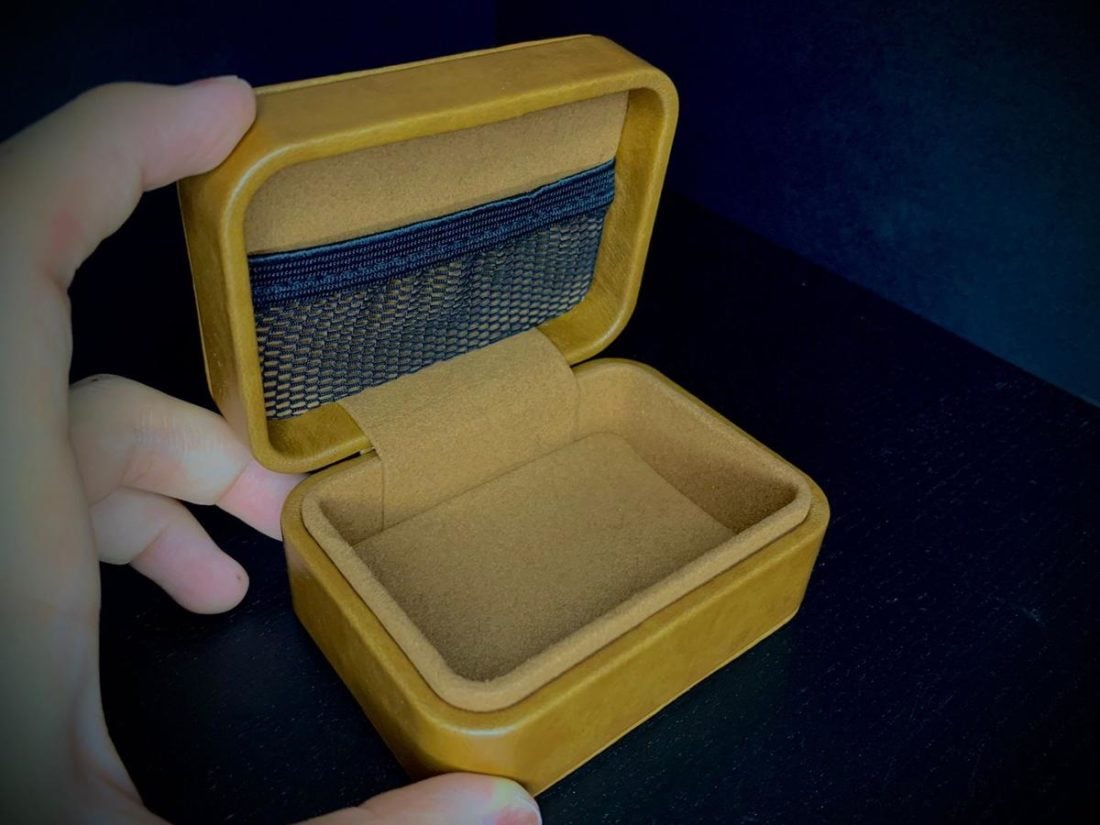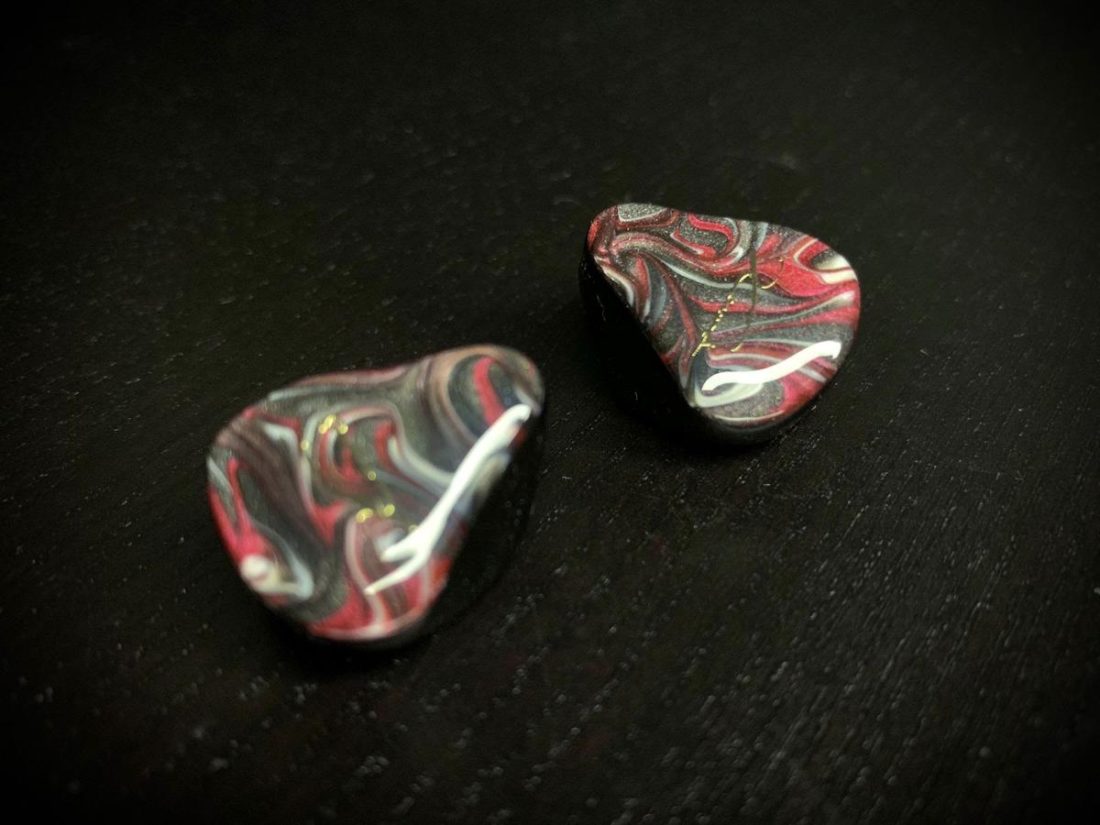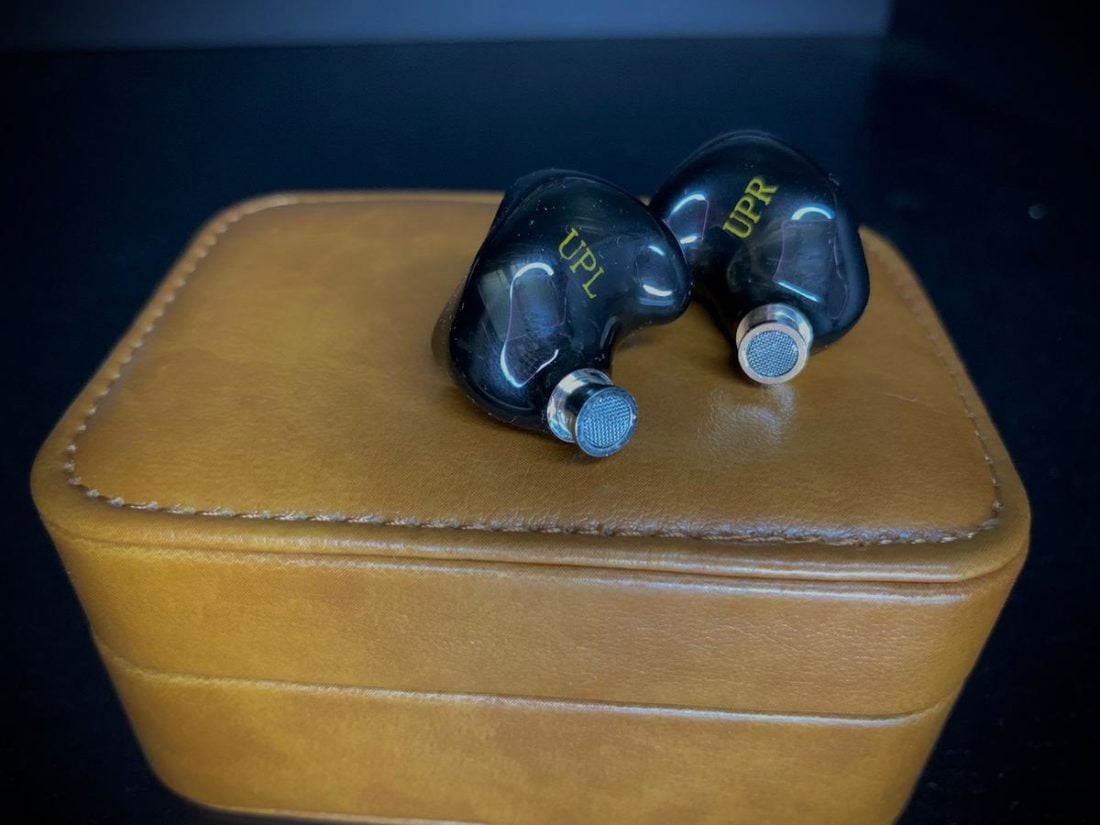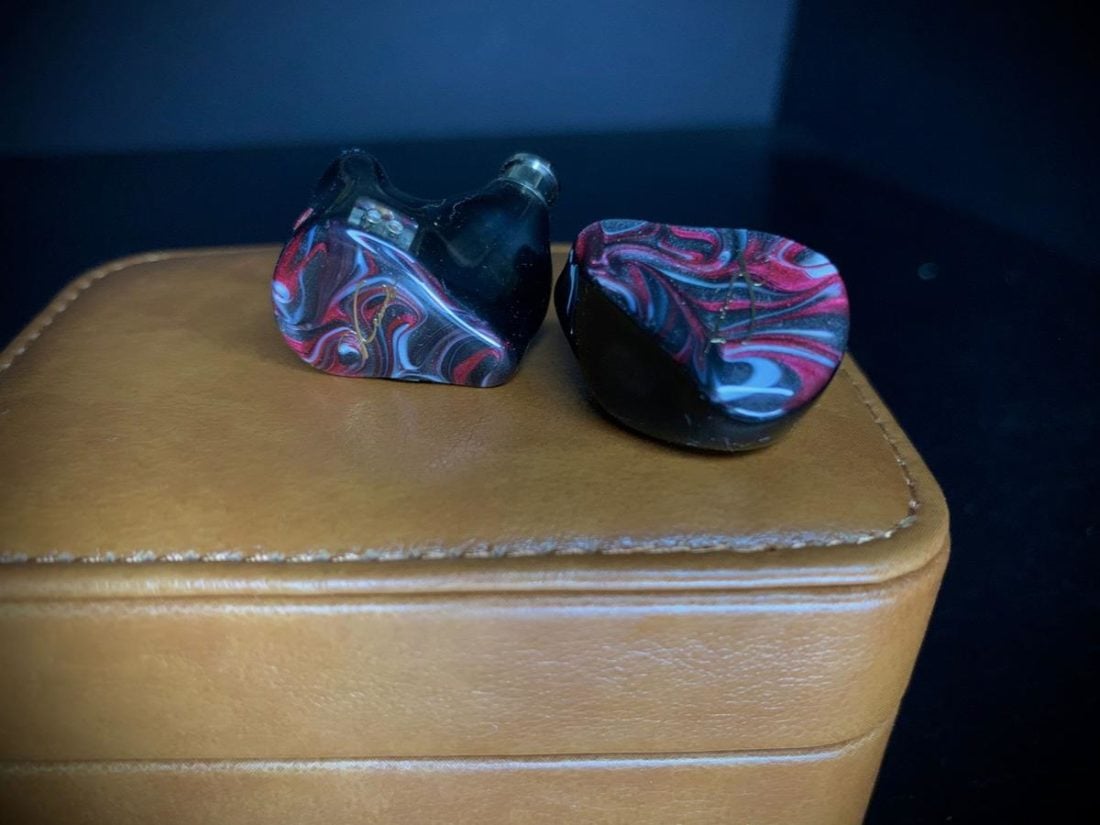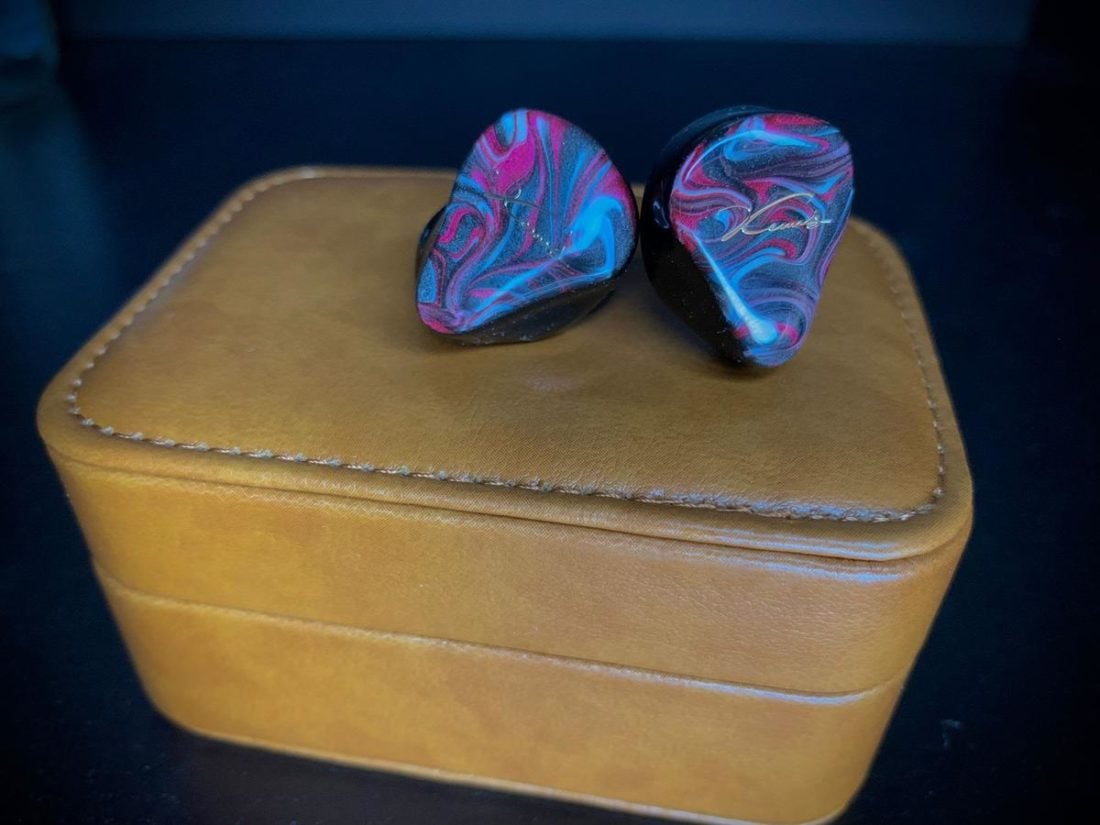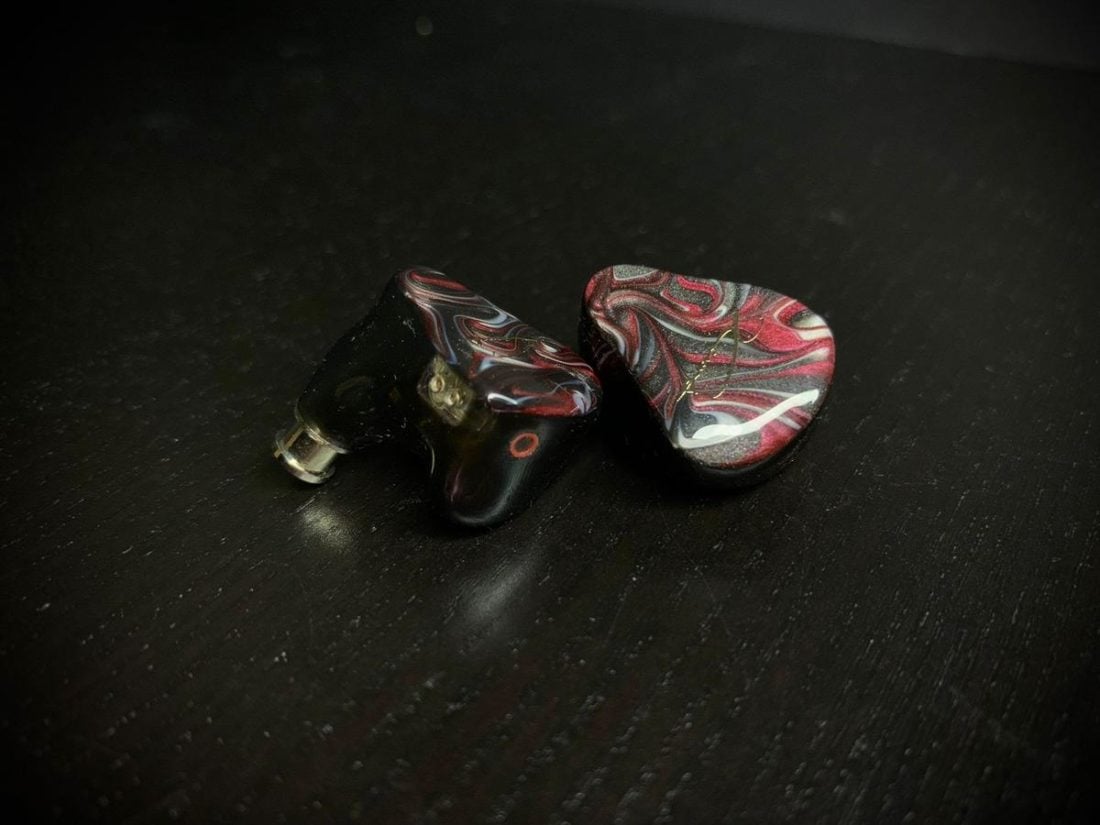The Mangird XENNS UP are a tribrid design that feature beryllium dynamic drivers, electrostatic drivers, and balanced armature drivers. In the current audio scene, tribrids are kind of the rage. The term “tribrid” can be used for IEMs that incorporate 3 different types of drivers in various permutations, from the following driver options: balanced armature, dynamic, EST (electrostatic), planar, or piezoelectric. While the term EST (electrostatic) is commonly used for discussion in tribrids, to be pedantic, the ones used in the budget segment (eg Senfer MT300, Shouer Tape, Shuoer Tape Pro) and even in the more expensive price range (eg the Mangird XENNS UP, DUNU EST 112, Moondrop Variations, ThieAudio Excalibur and Oracle) are usually that of a lower-voltage electret or magnetostatic driver, rather than a true electrostatic driver. The electrets in the XENNS are already pre-charged, but they theoretically can lose their charge over time and may be rendered inoperable once the charges are depleted. Though in all likelihood, we who are in this recalcitrant audio rabbit hole, will probably receive a new pair of hype-train IEMs in our mailbox way before any electret charge is depleted. Maybe the new set will arrive while we are still burning in this one! To be honest, there is probably an element of marketing gimmick involved to label these electrets as “electrostatic” drivers so as to stand out in the ultra cut-throat CHIFI industry. But since the industry uses the “electrostatic” term to be synonymous with “electrets”, I won’t belabor the point.
Technical Specifications
Form: IEMs Drivers: 2 x Sonion EST65DA01 drivers for ultra-high frequency, 2 x Sonion custom balanced armatures for high frequency, 2 x Sonion 2300 series balanced armature for mid-high frequency, 1 x 10 mm imported beryllium-coated dynamic driver for bass Impedance (Ohm): 20 +/- 2 Ohm Sensitivity (dB): 110 +/- 1 dB/mW Frequency Response (Hz): 20 Hz – 80 kHz Cable: 1.2 m, 6N OCC silver-plated cable with Litz braiding technique Removable Cable: Y Source Plug: 2.5 mm (includes adapters for 3.5 mm and 4.4 mm sources) Cup/Shell Plug: 2-pin, 0.78 mm Mic: N
Packaging
The outer sleeve packaging is colored in an amalgam of red, white, and black, which reminds me of oozing lava! Upon removing the sleeve, the inner box is black with the Mangird logo emblazoned on it. Opening this inner box reveals a treasure trove of accessories.
In the box
Mangird XENNS UP IEMs 6 pairs of silicone ear tips (S, M, L) – 3 pairs of shorter and narrower bore ear tips, and 3 pairs of taller and wider bore ear tips 4 pairs of foam ear tips – 2 pairs of small and 2 pairs of medium-sized foam ear tips Cable – 6N OCC silver-plated cable with Litz braiding technique Leather storage case VIP card 2.5 mm to 4.4 mm adapter 2.5 mm to 3.5 mm adapter 3.5 mm to 6.35 mm adapter Airplane jack adapter Shirt clip
For the silicone tips, the wider bore ones tend to boost the upper frequencies a tinge, whereas the narrower bore ones tend to boost the bass frequencies. I have to emphasize that ear tips are a kind of YMMV situation, as we all have different ear anatomy, which will affect pinna gain, fit, and isolation (the latter of which affects sub-bass response).
Cable
The included cable is a 6N OCC silver-plated cable with a Litz braiding technique. It has minimal microphonics and feels hefty and substantial in terms of haptics. The cable comes with a chin cinch and has left/right markings for easy identification. I like that the stock cable is 2-pin, which is my general preference for IEMs, as MMCX connectors may sometimes become loose with frequent cable changes.
Case
Included is a brown leather case, with Mangird’s logo embossed on it. There is attached webbing on one of the inner sides of the case, which is useful to secure smaller accessories.
Design
According to Linsoul, each Mangird XENNS UP shell is hand-painted by an experienced artist. As such, the faceplate of each IEM is individual and distinct. Think of it as a unique fingerprint of sorts for each set. The shells have left/right markings on the inner aspect, together with a red vent for the right side, and a blue vent for the left side, as per usual convention. Speaking about the vents, they, unfortunately, do let in some external noise and the isolation of this set is only about average. The Mangird XENNS UP definitely will not isolate as well as some unvented multi-BA types.
Comfort
The shells of the Mangird XENNS UP are made of full resin and they are very solid. There is a small concha protrusion on the shell for a better grip. The shells themselves are light and comfortable, and they look and feel like semi-customs. I didn’t find any driver flex on this set, but driver flex is partially dependent on ear anatomy and the types of tips used, so YMMV once again.
Internals
As discussed above, the Mangird XENNS UP are a tribrid design that boast a unique driver setup, featuring a mishmash of beryllium dynamic, EST, and balanced armature drivers. In my previous review of the Thieaudio Legacy 2, I was pretty disappointed by the advertised beryllium dynamic drivers incorporated for the bass frequencies. The bass on the Legacy 2 didn’t really sound much different than a conventional bass driver. I’m pleased to report that for the Mangird XENNS UP, the beryllium drivers really make a difference here, and they provide deliciously textured, high-quality bass frequencies, which I will discuss in further detail below. The EST drivers handling the upper frequencies are tuned to be treble-safe and this pair of IEMs actually borders on an overall dark treble sound. The Mangird XENNS UP are not that easy to drive; they sound meh from a lower-powered source. They do scale beautifully with power, and having an amplifier on hand will do the sound more justice. Areas like dynamics, bass extension, tightness, and soundstage do improve when this set is properly amped.
Mangird XENNS UP Sound
The Mangird XENNS UP are a warm U-shaped sounding set; they are fun sounding and bassy. Indeed, these IEMS are a basshead’s delight, with bass quality and quantity both tuned to perfection. The treble is pretty tame, and treble lovers will probably need to look elsewhere. Imaging and instrument separation are good, though microdetails are not the best. The XENNS UP are tuned to be more fun sounding than analytical. Soundstage is above average in width, height, and depth. Considering the Mangird XENNS UP contain a mixture of drivers on board, the timbral accuracy is actually very well done for acoustic instruments, and I didn’t notice any odd BA timbre in this set.
Bass
Bass on the XENNS UP descends linearly from the mid-bass to the sub-bass. The beryllium drivers used for the bass are well implemented, and this gives them great quality and quantity in the bass frequencies. The mid-bass is very textured, with multiple layers in the bass lines able to be discerned. The bass also incorporates good speed and timbre and this is not the one-noted boomy, undefined bass that plagues a lot of bass boosted sets. The big bass gives the XENNS UP a very fun-sounding signature, and they do very well for bass-heavy music genres such as EDM and hip hop. Nevertheless, it is colored by the quantity, so perhaps for certain genres like classical or jazz that does not require too much low-end, some might find the bass a bit distracting.
Midrange
Midrange on this set is not as depressed as some V-shaped sets, but the bigger bass quantity may actually give a perceived sense of a recession in the midrange. Hence, the mids may sound a bit thin when compared to the big bass on show here. The upper mids are slightly boosted but the pinna gain isn’t that marked. It actually manages to balance a fine line of having forward vocals without veering into shouty territory. I’m rather sensitive to this area and found it was well within my tolerances. Female voices have a little bite without being too harsh on the ears.
Treble
Treble on the XENNS UP is actually on the darker side. It is very non-fatiguing and safe for treble-sensitive folks. Treble extension is moderate, and sibilance is very mild to non-existent. There are both pros and cons here, as the Mangird XENNS UP do not have much sparkle, and show some loss of microdetails. Trebleheads and those that want more sparkle will need to look elsewhere.
Comparisons
Vs. Audiosense AQ7
The Audiosense AQ7 are tuned neutral-ish with a sub-bass boost. The Audiosense AQ7 are much easier to drive. The Audiosense AQ7 have a more obvious BA timbre that can sound a bit artificial for acoustic instruments. The Audiosense AQ7 have slightly better micro-details and clarity, but worse imaging. The AQ7 also have a thinner note weight. Bass quality and quantity is better on the Mangird XENNS UP.
Vs. Campfire Andromeda 2020
The Campfire Andromeda 2020 are more balanced sounding, with less bass and more treble quantity than the Mangird XENNS UP. The BA bass heard on the Andromeda 2020 is understandably not as full-bodied as the beryllium dynamic driver bass of the XENNS UP. The Campfire Andromeda 2020 beat the Mangird XENNS UP in technical chops, in areas such as soundstage, imaging, instrument separation, clarity, and micro-details. The Andromeda 2020 are much easier to drive, though they hiss with some sources. Due to the lowish 12.8 ohms impedance on the Andromeda 2020, they are rather picky with source matching, and pairing sources with high output impedance may skew the frequency response of this set.
Where to Buy
Linsoul
Conclusion
In a nutshell, the Mangird XENNS UP are a bassy, warm U-shaped set that is full of fun. Bass is the definite star of the show here. In fact, I would stick out my neck and say that the Mangird XENNS UP have probably one of the best low-end that I’ve heard in my IEM journey. The legendary Sony IER-Z1R also have tremendously delicious bass, but I had very bad fit issues with the Sonys and the midrange wasn’t the best on that set (especially considering the price). Technicalities on the Mangird XENNS UP are quite good, and the included accessories are generous. They are also a looker, with each shell being individually hand-painted and unique. In view of the tamed treble, trebleheads will need to look elsewhere though. The big bass quantities may also not fare well with certain music genres, but by and large, I strongly recommend bass lovers to check out the Mangird XENNS UP. For you big bass enthusiasts, I’d add another half star to my rating.
